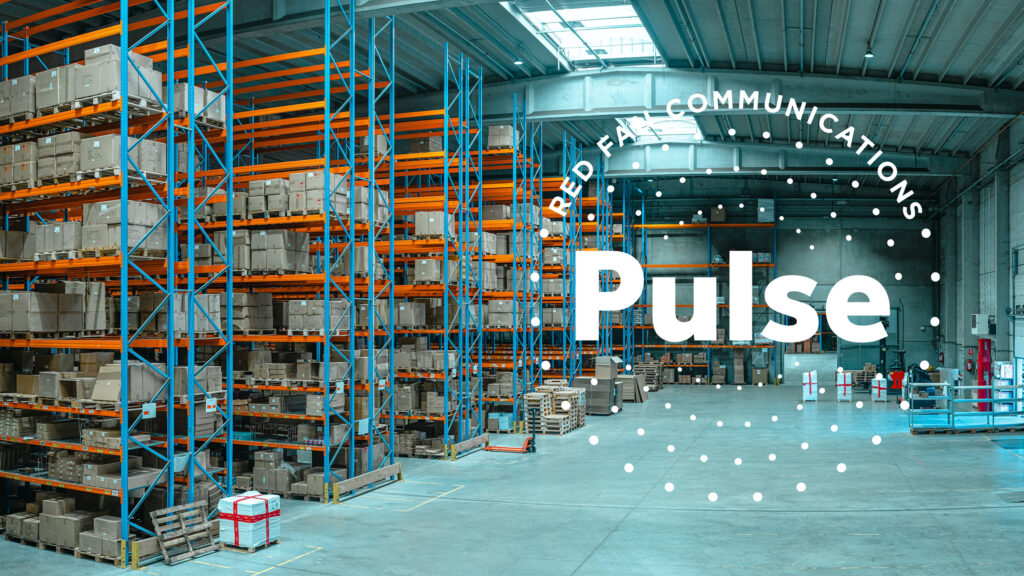Running on Empty: Supply Chain Woes
The global pandemic that we’ve grappled with for almost two years has illustrated just how delicate supply chains truly are. Raw materials shortages, climate change and inefficient transportation management systems in complex global supply chains have combined to impact the very nature of how entire industries create, move and deliver their products.
To understand how businesses can target these issues and work toward efficient supply chain management, we must first understand why supply chains are being impacted and how widespread these issues truly are.
The Many Factors that have Impacted the Supply Chain and the Economy
The public reacted to the pandemic the way it always does in a time of crisis: People hoarded the essentials, stocking up on food, household supplies and other goods, which in turn drained entire inventories in both the brick-and-mortar and digital environments.
The shift toward remote work and a mandatory homebody lifestyle during lockdown created unprecedented demand across industries: exercise equipment, office supplies, electronics, entertainment products, the list goes on and on.
More than a year later, most of us would have expected to see signs of recovery when it comes to the availability of raw materials and essential products. But one year has clearly not been long enough for suppliers, distributors and entire industries to correct the flaws in complex supply chains that have ballooned in size since the rise of globalization decades ago. The failed expectations beg the question, “Why?”
Increased Demand in a Fragile Economy
For most, the promise of recovery is an alluring one. The reality? Businesses are not only still trying to adapt to massive fluctuations in demand that directly affect supply, but they’ve also been forced to create new methods of distribution and delivery to supplement significant revenue losses.
Take, for example, the restaurant industry. In the face of nationwide lockdowns, small and mid-sized restaurants faced a complete loss of income as few people were willing to venture outside in fear of contracting the virus. Which also radically diminished demand from food suppliers.
With fewer restrictions and the development of COVID-19 vaccines, restaurant owners are now accommodating droves of customers. While this may be perceived to be a positive development, few restaurant owners anticipated such a strong return and are now struggling to meet this increased demand.
Of course, this shortage of raw materials and other goods that businesses need from suppliers extends to other industries that are essential to modern life: construction materials, semiconductors and other resources that impact a much broader range of industries like manufacturing, automobiles and electronics, to name a few. Put simply, there are not enough materials going around to meet the increased needs of this post-COVID world—and when there are, supply chains are struggling to tackle the profound sourcing, logistics and delivery challenges that have always existed to some degree, but which the pandemic has further exacerbated.
Worker Shortages
Beyond the materials themselves, many suppliers find themselves faced with labor shortages that have ensued because of a wide variety of factors.
One of the reasons why it’s so hard to find workers is due to the unemployment benefits that were established to support the general public. For some, unemployment paid out more than they were making at their previous job, which encouraged them to rely on aid to pay their bills and receive financial support.
Others simply refuse to return to their former jobs because of low wages or operational constraints and mandates. Factor in a lack of child care, continued health concerns, a lack of workers with the right skills and experience, the rise in the popularity of remote work, and you have the perfect recipe for prolonged labor shortages.
Transportation Issues
Remember the Suez Canal incident? The extended blockage that resulted in product shortages may have been the most covered event, but transportation issues still exist and are far more widespread than a single moment in time.
Getting all of the materials we need in the time frame that we want them is nearly impossible at the speed that businesses currently require. This is partially due to the Amazon effect and the rise of just-in-time delivery models, but again, also due to lack of efficiency across the entire supply chain—whether it’s a dependence on legacy technology, lack of collaboration across different nodes or huge data vacuums that impact decision-making ability.
It’s a perfect storm that has resulted in the disruption of multiple supply chains that today’s businesses rely on to continue their operations. But does that mean that businesses are at the mercy of these developments? Not entirely.
To navigate this crisis more effectively and plan for the future, here are a few tips to understand what you can do during supply chain crises.
1. DON’T RELY ON JUST ONE OR TWO SUPPLIERS FOR YOUR NEEDS.
Supply chain sustainability relies on your organization’s ability to be flexible when external circumstances demand it. Businesses that depend on only a handful of suppliers are likely those who have been the most affected by supply chain issues.
Better supply chain management begins with diversifying your suppliers so that you’re constantly bringing in the supplies you need and have others you can lean on when one is unable to deliver. This is essential for B2B and B2C businesses alike.
2. STAY ON TOP OF YOUR INVENTORY AND SUPPLY CHAIN WITH MODERN TECH.
Modern inventory management solutions make it easier for you to stay on top of your supply chain and logistics.
Invest in solutions that can help you view your inventory in real-time, stay connected with your suppliers and other individuals in your supply chain, and give you valuable insights you need to make adjustments in your business quickly.
The right infrastructure makes a world of a difference in your business operations.
3. START YOUR RISK MANAGEMENT STRATEGY NOW.
We can anticipate that we will inevitably encounter obstacles that will impact our supply chain in the future.
Developing risk management strategies for your business, making room for additional inventory, and conducting cash-flow forecasting are all ways you can prepare for future challenges and ensure your business survives. Planning ahead is never a bad idea.






